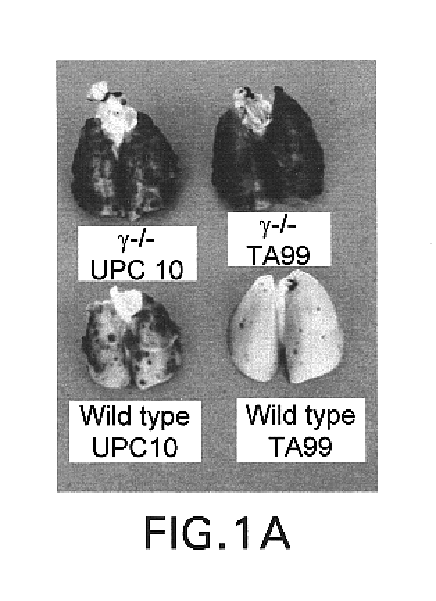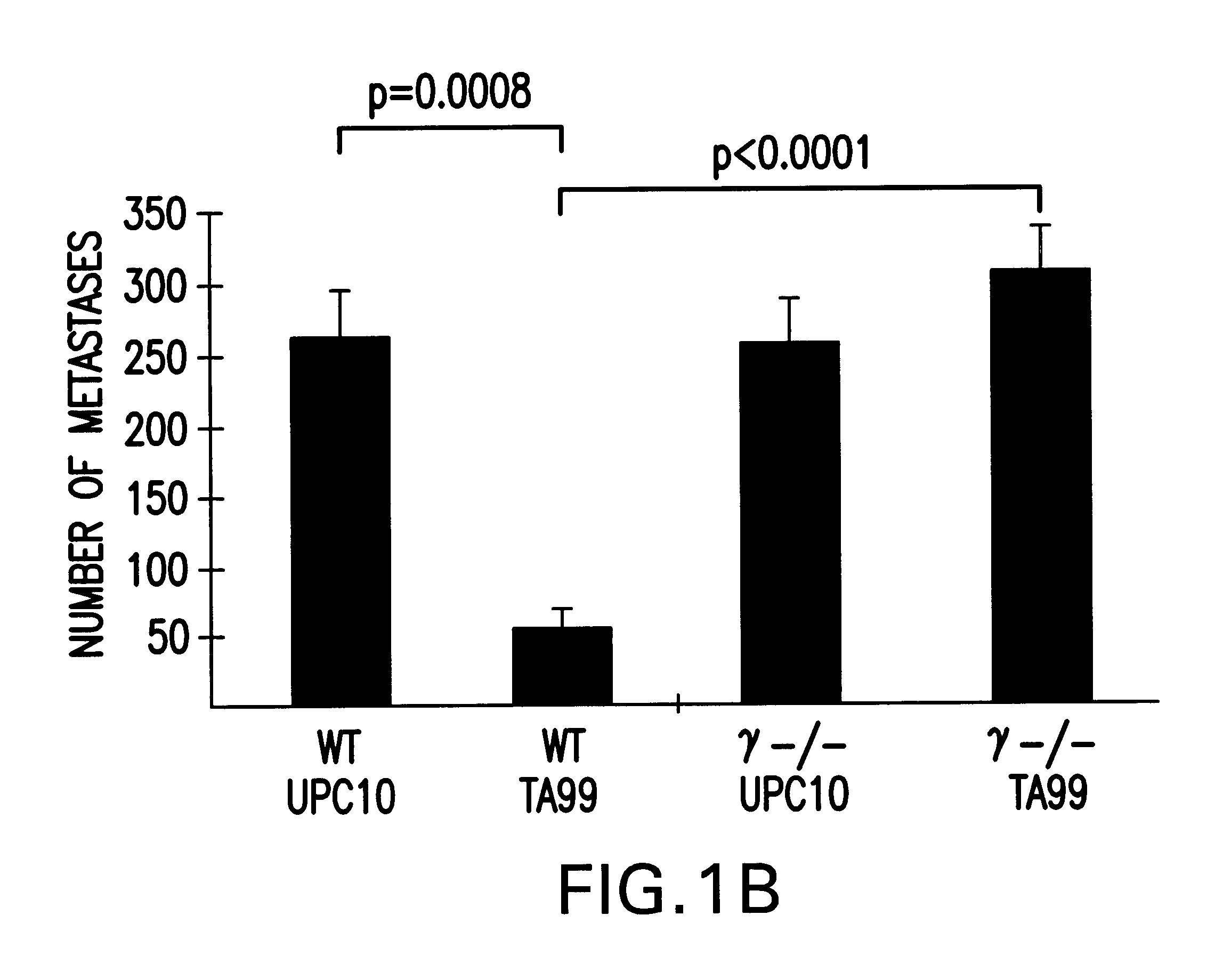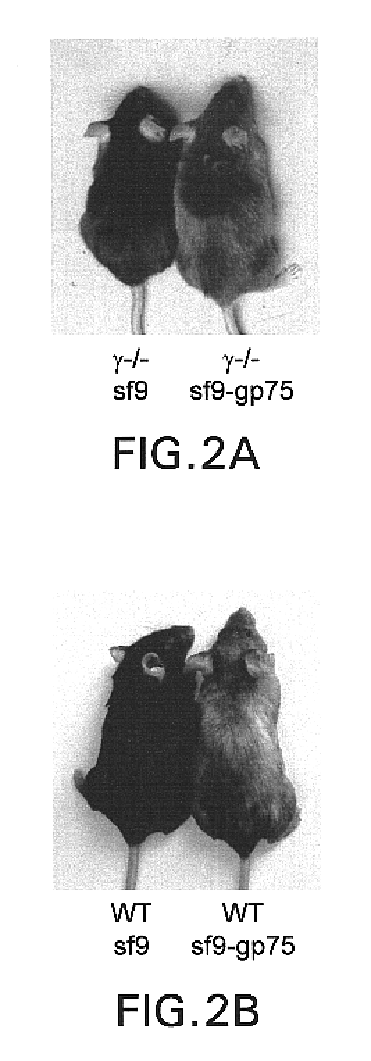Animal model and methods for its use in the selection of cytotoxic antibodies
- Summary
- Abstract
- Description
- Claims
- Application Information
AI Technical Summary
Benefits of technology
Problems solved by technology
Method used
Image
Examples
Embodiment Construction
The challenge of cancer immunotherapy is the induction of anti-tumor immune responses specific for self or altered-self tumor antigens. The resultant immune responses are, therefore, capable of triggering both clinical tumor responses and autoimmune phenomena. In Section 6, infra, the effector mechanisms responsible for these outcomes are explored in a melanoma model in which immunization can induce both anti-tumor responses and autoimmune vitiligo. The cytotoxic response mediated by antibodies is just one possible effector mechanism contributing to the efficacy of anti-tumor mAbs or tumor vaccines. Indeed, much of the current effort in tumor immunology is directed at the generation of effective cytolytic T cell responses. In the protection model described herein, however, the critical requirement for Fc.gamma.R indicates that the development of cytotoxic IgG is the dominant anti-melanoma mechanism. The results of the experiments presented herein demonstrate that the Fc.gamma.R-defi...
PUM
| Property | Measurement | Unit |
|---|---|---|
| Cytotoxicity | aaaaa | aaaaa |
Abstract
Description
Claims
Application Information
 Login to View More
Login to View More - R&D
- Intellectual Property
- Life Sciences
- Materials
- Tech Scout
- Unparalleled Data Quality
- Higher Quality Content
- 60% Fewer Hallucinations
Browse by: Latest US Patents, China's latest patents, Technical Efficacy Thesaurus, Application Domain, Technology Topic, Popular Technical Reports.
© 2025 PatSnap. All rights reserved.Legal|Privacy policy|Modern Slavery Act Transparency Statement|Sitemap|About US| Contact US: help@patsnap.com



